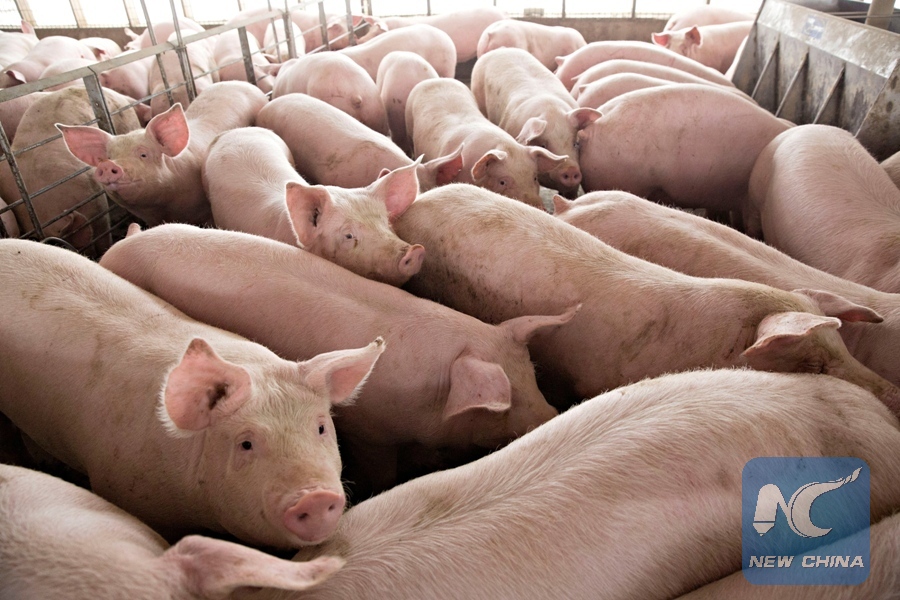
Pigs nearing market weight stand in a farm in Illinois, U.S., April 9, 2018. (Xinhua/REUTERS)
WASHINGTON, May 14 (Xinhua) -- A recently identified pig virus can readily find its way into laboratory-cultured cells of people and other species, a discovery that raises concerns about the potential for outbreaks that threaten human and animal health.
In a study published on Monday in the journal Proceedings of the National Academy of Sciences, researchers at the Ohio State University and Utrecht University in the Netherlands pointed to possible transmission of a virus called porcine deltacoronavirus between species.
The virus was first identified in 2012 in pigs in China, which was not associated with disease. It was first detected in the United States in 2014 during a diarrhea outbreak in Ohio pigs and has since been detected in various countries.
According to the researchers, young, infected pigs experience acute diarrhea and vomiting, but no human cases have been documented.
"We're very concerned about emerging coronaviruses and worry about the harm they can do to animals and their potential to jump to humans," said the paper's senior author Linda Saif, an investigator in Ohio State University's Food Animal Health Research Program at the Ohio Agricultural Research and Development Center.
The potential for a virus to jump from one species to another is highly dependent on its ability to bind to receptors on the cells of the animal or human, said lead researcher Scott Kenney, an assistant professor of veterinary preventive medicine at Ohio State University.
"A receptor is like a lock in the door. If the virus can pick the lock, it can get into the cell and potentially infect the host," Kenney said.
This study looked at a particular cellular receptor called aminopeptidase N that the researchers suspected might be involved.
The researchers confirmed that the virus could bind to the receptor in pigs and also was able to bind to the receptor in human cells and to cells from cats and chickens.
For now, the only known infection in humans and other species is in the laboratory, using cultured cells.
"We know from other coronaviruses that these receptors on the cells are used and that they are found in the respiratory and digestive tracts of a number of different animals," Kenney said. "Now we know that this new virus could go into cells of different species, including humans."
"From that point, it's just a matter of whether it can replicate within the cells and cause disease in those animals and humans," Kenney said.
"We now know for sure that porcine deltacoronavirus can bind to and enter cells of humans and birds. Our next step is to look at susceptibility: can sick pigs transmit their virus to chickens, or vice versa, and to humans?" said Saif.
The emergence of the new virus is worrisome to veterinary and public health experts because of its similarity to the life-threatening viruses responsible for SARS (severe acute respiratory syndrome) and MERS (Middle East respiratory syndrome) outbreaks.

